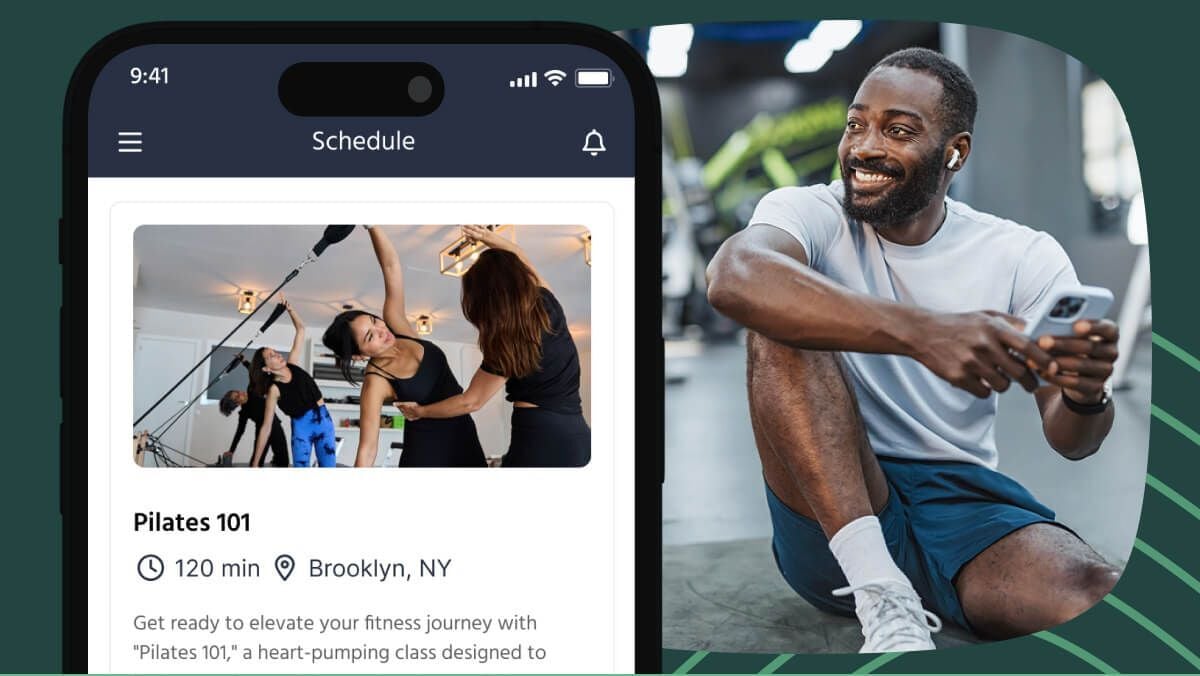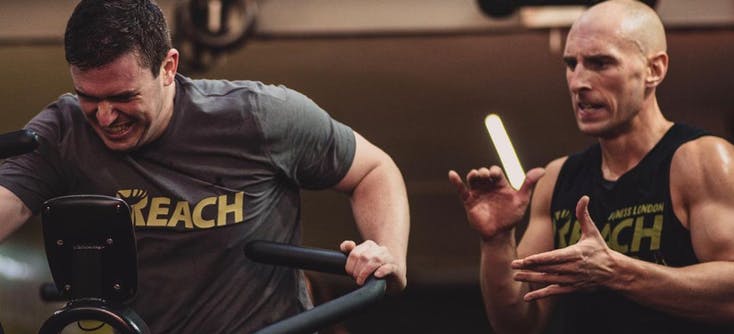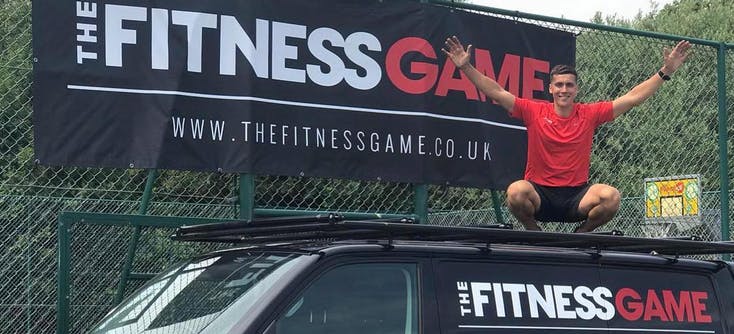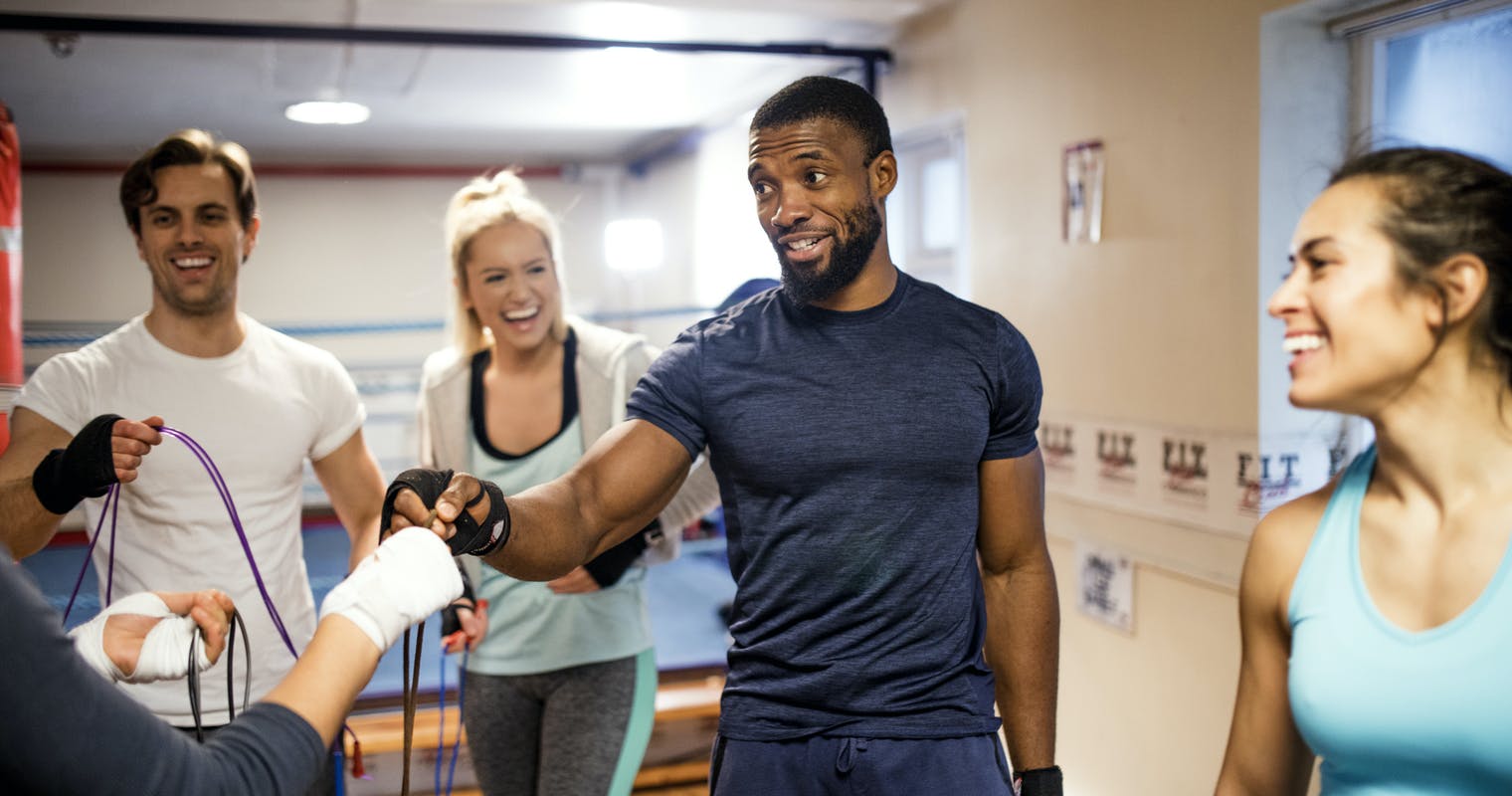With increased internet and mobile device access, online presence and optimization have become an integral part of acquiring new customers.
Search engine optimization (SEO) essentially is optimizing your content, keywords, website, and backend for the search engines (Google, Bing, etc.) to identify and rank your content higher than your competitors.
However, there are no shortcuts to SEO. If you want to grow your business through organic traffic from search engine result pages (SERP), you must put in the efforts and resources to use. This article will discuss the basic and advanced SEO practices for the gym and fitness industry.

The WHY of SEO for Gyms
As ambiguous as the fitness industry is, with numerous self-proclaimed “experts” budding every other day, it’s critical to stay on top of the game, or you may risk losing business to competitors with less credibility and better finances.
As a gym owner or manager, you may already know how fitness enthusiasts prioritize gyms and workouts. And nothing screams credibility more than appearing as the first result on SERPs.
Moreover, with better local SEO, you can reach customers who aren’t willing to drive 5 miles to get to their gym in the morning but have the financial potential to subscribe to your premium services.
With the brief WHY out of the way, let’s dive deeper into SEO practices that you must consider for your gym’s online presence.
Please be aware that to implement the strategies and techniques below, you will need to have a running website and some technical knowledge.
1. Do a professional website audit
A website audit is professionally screening your website for technical and content issues that may negatively affect SEO. We mention professionally, but with enough SEO knowledge, you can do it yourself.
Google manual actions report
Typically, dedicated bots and algorithms ensure the compatibility of a website that is to be indexed. As long as something isn’t terribly wrong with your website or page, you may not be subjected to manual action by a physical team. Regardless, you should check recommended manual actions through Google Search Console regularly to ensure webmaster guidelines are being followed to ensure the safety of both your users and rankings.
HTTPS issues and mitigation
HTTPS is an encryption protocol that secures the communication between the web servers and your browser. Typically, a lock icon in the address bar ensures that the webpage is HTTPS encrypted. Since the beginning of 2014, HTTPS has been a significant ranking factor.
If you use WordPress for development, you may find several plugins to encrypt communications and get the badge. Or else, you can do it yourself by redirecting stand-alone HTTP URLs to redirect to their HTTPS versions. Depending on your hosting provider, the SSL certification comes bundled with the package.
Domain identification and unique access
Google bots generally regard HTTP, HTTPS, and “with www.” website versions as different URLs. If your gym, for example, has a domain name “lifestylegym.com”, it will make distinctions between:
http://lifestylegym.com
https://lifestylegym.com
http://www.lifestylegym.com
https://www.lifestylegym.com
And treat each of them differently if they don’t redirect to the canonical version. In a few rare cases, it can negatively impact SEO and, ultimately, site ranking. You may fix the issues by auditing your website through SEO tools to ensure that the different versions of the site aren't returning any 301 or 404 errors.
Indexing issues
Search engines use automated bots, namely “spiders”, to crawl websites and pages to add them to the database to show to its users when required. Your webpages first need to be in this index to even start ranking. However, you must also keep unimportant pages out of the index to prevent negative SEO effects.
The bots often can’t index a page due to technical reasons. You may see the issues in detail through Google Search Console. Until and unless you fix those issues and submit a request, your pages won’t be indexed and won’t find their way into SERPs.
If you have pages that don’t need to be indexed, such as blog posts with language variations, you may request deletion. Honoring the request, however, is up to the algorithms.
Mobile optimization
A typical internet user accesses search engines through mobile devices in 2023. Understandably, Google puts in a great effort to encourage the owners to optimize their websites for mobile devices by ranking them higher. While responsive designs have made the job easier, it’s your responsibility to make your gym website or web app accessible through as many devices as possible for substantial SEO gains.
Consider image optimization, shorter paragraphs, short videos, and bigger buttons for better mobile optimization. You may remotely check your website’s mobile friendliness through the Google Mobile-Friendly Test tool.
Page speed optimization
Your gym’s online presence needs to be faster than your competitors. Statistically speaking, anything more than 3 seconds is a formula for SEO destruction and bottom feeding. Google PageSpeed Insights offer various metrics to analyze and mitigate the bottlenecks. You must consult your developer to mitigate these issues. If you use WordPress or something similar, you may find paid or free plugins for the same.
However, there isn’t any particular “maximum time” that you should target. Focus on loading your websites as fast as possible through decreasing backend load and optimizations.

Google page core web vitals
Available through the PageSpeed Insight tool, Google Core Web Vitals tracks user experience through Chrome User Experience (CrUX) and measure load time, interactions, and stability. Don’t stress over the results too much as these are still not considered a strong ranking factor.
Sitemap update and issues
Sitemap is a dedicated text document uploaded on the website in a particular format to let the bots know which pages to index and which not to. For better SEO, you should consider delisting non-canonical pages, redirects, and dead pages through the sitemap.
Basic title and on-page SEO
SERPs typically show the title tag as the headline and the meta tags as a short description beneath it. Missing title, meta, and H1 tags allow the bots to automatically fill the placeholders through the content available on the links. As you can imagine, it usually doesn’t work well.
2. Keyword research is key
Keywords are phrases that your audience searches on the SERPs to find you. Most keywords are knowledge-centric. “Gym how many times a week”, “gym routine for bulking”, and “how many reps per set” are instances of such keywords. However, buyer-intent keywords like “gym near me”, and “personal trainer for hire” may also be used. Google Keyword Research Tool is a great resource for finding relevant keywords for your gym website.
Keyword relevance
Keywords aren’t only meant to generate ads. Blog posts, website copy, and social media posts also are dependent on them. By choosing relevant keywords tangential to your business, you can stay on top of your SEO game.
Staying out of competitive keywords
Google has a particular bias toward high-DR websites like Healthline, WebMD, Self, and EverydayFitness. Short-tail keywords like “fitness”, “gym routines”, and “ab workouts” may have heavy search volumes but are highly competitive to rank on. In your case, as you still aren’t a prominent name, relying on long-tail keywords may be the best bet.
Search volume across keywords
Long-tail keywords generally aren’t as great as short-tail ones for organic traffic. But, if you can choose relevant keywords that have moderate traffic you can pretty much eat them all up and drive your competition out of the way.
Understanding keyword intent
As a business, you must have several data-backed customer profiles to develop your web copy on. Your blog posts, shop page, and even the payment page should reflect their requirements and questions.
When implementing the profile features on the sales funnel, you must be aware of the keyword intent that you want to rank on. Knowledge-based keywords are great for generating traffic, but they lack conversions. Choose buyer-centric keywords for that.
Keyword insertion
Deciding upon the perfect keywords is the first step toward building your SEO presence. Knowing how to insert them on your website, content, and ads is what matters. However, keyword stuffing doesn’t work anymore.
You need to make sure that your Titles, H1 tag, and meta tags include the keywords, but not the extent of irrelevance. Consider developing content around the keywords, but never lose the focus on informing your audience about your services and how they can help fitness enthusiasts.
3. Embrace content strategy
Randomly publishing content without relevance or reference wouldn’t get you anywhere. Although Google ranks the links based on content, it won’t rank you for irrelevant pieces that don’t match your services or products.
Understanding audience demographics
Audience demographics are the key factor in understanding which content might generate interest in your intended customers. If your contents are written like they target astrophysicists, but are intended for teenage fitness enthusiasts, you would never be able to rank on them.
A particularly effective strategy to find the perfect demographics is to run PPC ads. You can leverage the data generated by the ad campaigns and use them to develop your content. You may also use the demographic data for future conversion or ROAS ads.
Content relevancy
Always stay relevant to your audience. Find content gaps that the industry has failed to fulfill yet. Generate content on frequently asked questions on online forums and related searches (Google SERP). Arguably, staying relevant with your content is much more critical than generating pillar posts with 6000 words. Moreover, regularly upload and update your content.
Communicate with your audience, not spiders
When writing content for your website, use the tone you use to address your friends and family. Make them understand your point but don’t berate or lecture them. Use an easier vocabulary and keep your paragraphs short for reading on mobile devices.
As smart as Google bots have become, they already understand which keywords to rank you on and how credible your presence is.
4. Optimizing local SEO for gyms
Local SEO is meant for local customers to find your business. Usually, the first results on SERPs, generated through a buyer-centric keyword, are local businesses. As a gym, you should strive to become the first result through optimizing local SEO.
Leverage Google My Business
Google My Business is a stand-alone tool that lets you personalize and control your local listing. It’s the first step towards building local SEO. You can change your timing, upload photos, videos, and list products through the mobile or desktop app. Generally, you need to list your business through My Business before you can appear on the SERPs as a local business.
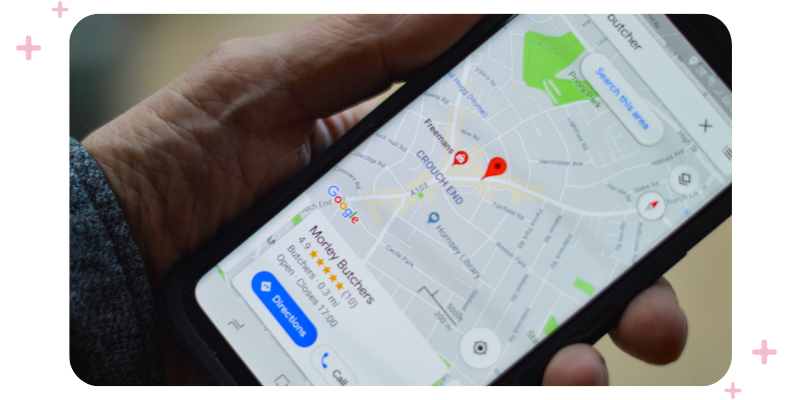
Utilize Social Media platforms
Google tends to favor social media platforms. Use your My Business listing to promote products, services, and posts on social media profiles to generate free backlinks and engagement.
Put pricing on your services
Statistically, businesses with transparent pricing have a much higher chance of ranking than those without. When enlisting your services on My Business, don’t be ambiguous with your pricing. Moreover, starting in 2023, you aren’t even allowed to put a price range on your products through Google My Business.
Add your location and phone number
Location and phone number are two major factors to rank through local SEO. In addition to increasing your credibility, it offers the customers to reach you and communicate before they can purchase a membership from you. Your potential customers may want to communicate about your open and close times, week offs, and other doubts that they may have.
Focus on local relevant content
Content relevance also applies to local SEO. However, you need to cater to your localized customers for local SEO. For instance, if your location has an icy winter, consider generating content on how they can stay fit during that time without even coming to the gym for that particular month. While it may not seem productive for your business, it’s relevant to your customers.
Online reviews
Generate as many reviews as possible for your enlistment. Google SERPs consider reviews as major parameters for ranking. The reviews and ratings will also be shown to the users when they stumble upon your business. Moreover, cater to the negative reviews as you do to positive ones. Understand the issues, acknowledge the review publicly, and improve your services.
Find the best ways to use customer reviews
to grow your business
DOWNLOAD NOW 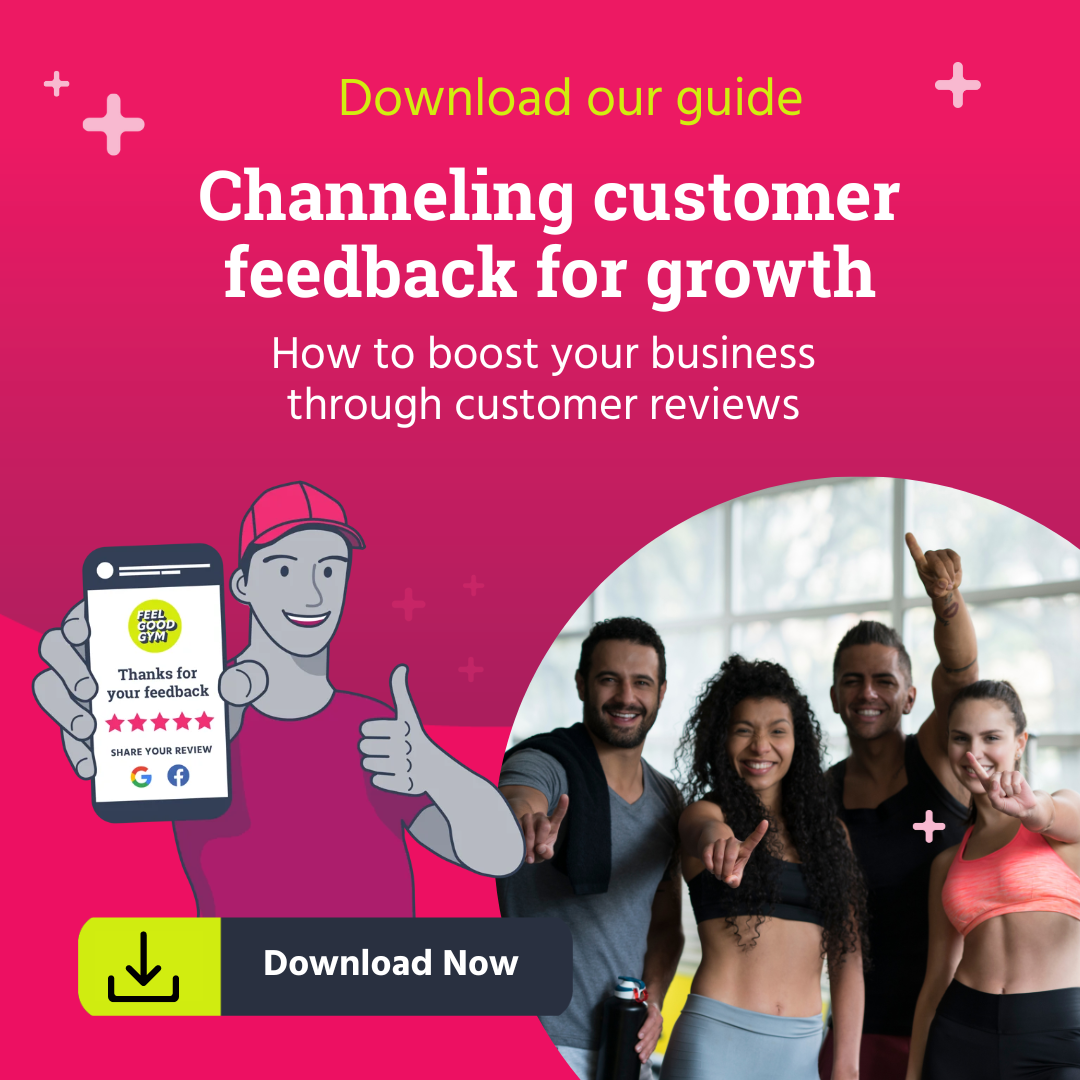
5. Links to increase authority, authority to increase links
Domain ranking depends on the number of high-quality incoming and outgoing links. Moreover, link-building is a craft in itself that can rank your website higher than your competitors. It’s considered a great source of SEO and, ultimately, organic traffic.
Backlinking
Backlinking is linking your website from other high-DR websites through guest posts and other content. Many tangential blogs in the fitness industry may allow you to generate content for them and include your links in the pieces. As they have higher traffic than you do, you get incoming traffic from those sources with additional domain ranking for each backlink generated.
Authority of outbound sites
Outgoing links or outbound links are links that you include in your own content on your website. You should always consider linking to high-quality websites as references to increase credibility and authority. As these websites are already considered authoritative by Google, your ranking improves when you include them in your content.
Internal linking
Try to link as many pages as possible throughout your website. For example, link to your terms and conditions, FAQ, shop, blog, and social pages from the homepage. Additionally, link your blog posts and infographics to other high-traffic pages that you may already have.
6. Recent AI improvements and the effects on gym SEO
With ChatGPT in trend, let’s talk about how you can implement AI in your SEO efforts in 2023. Although these tools still are in their infancy, you should start as early as possible to stay ahead of your competitors.
Faster keyword research
AI tools allow you to research keywords faster than generic keyword research tools. These tools also allow you to generate content ideas that you may build your pillar and additional posts on.
Quality content
Modern AI tools can write exceptionally well with the data available to them. While you may not be able to use them to generate content through your own data or new research, these tools can produce quality generic content faster. However, they aren’t as efficient as fact-checking as humans do.
Saving on human resources
You can save a lot on writers and editors through AI tools like ChatGPT. The cost and ROI of using these tools often trump the cost of sustaining better copywriters.
The bottom line
Hopefully, this article has laid out the foundations you need to start implementing your SEO strategy. Website audits such as actions reports, HTTPS issues, and indexing play key roles in SEO, followed by keyword research and an efficient content strategy. Local SEO, links, and AI tools also contribute to ranking your website better than your competitors.




